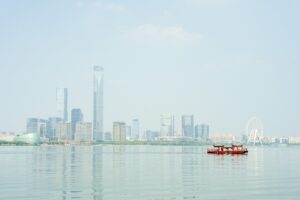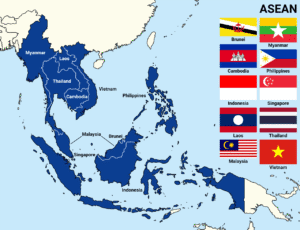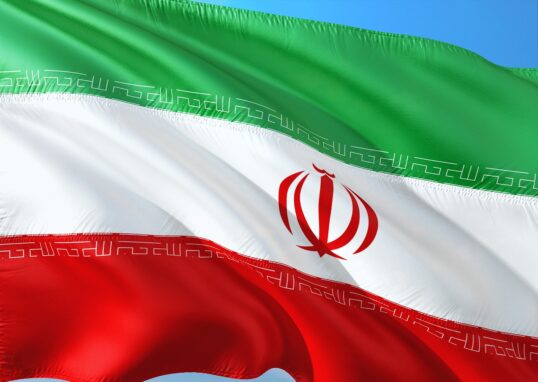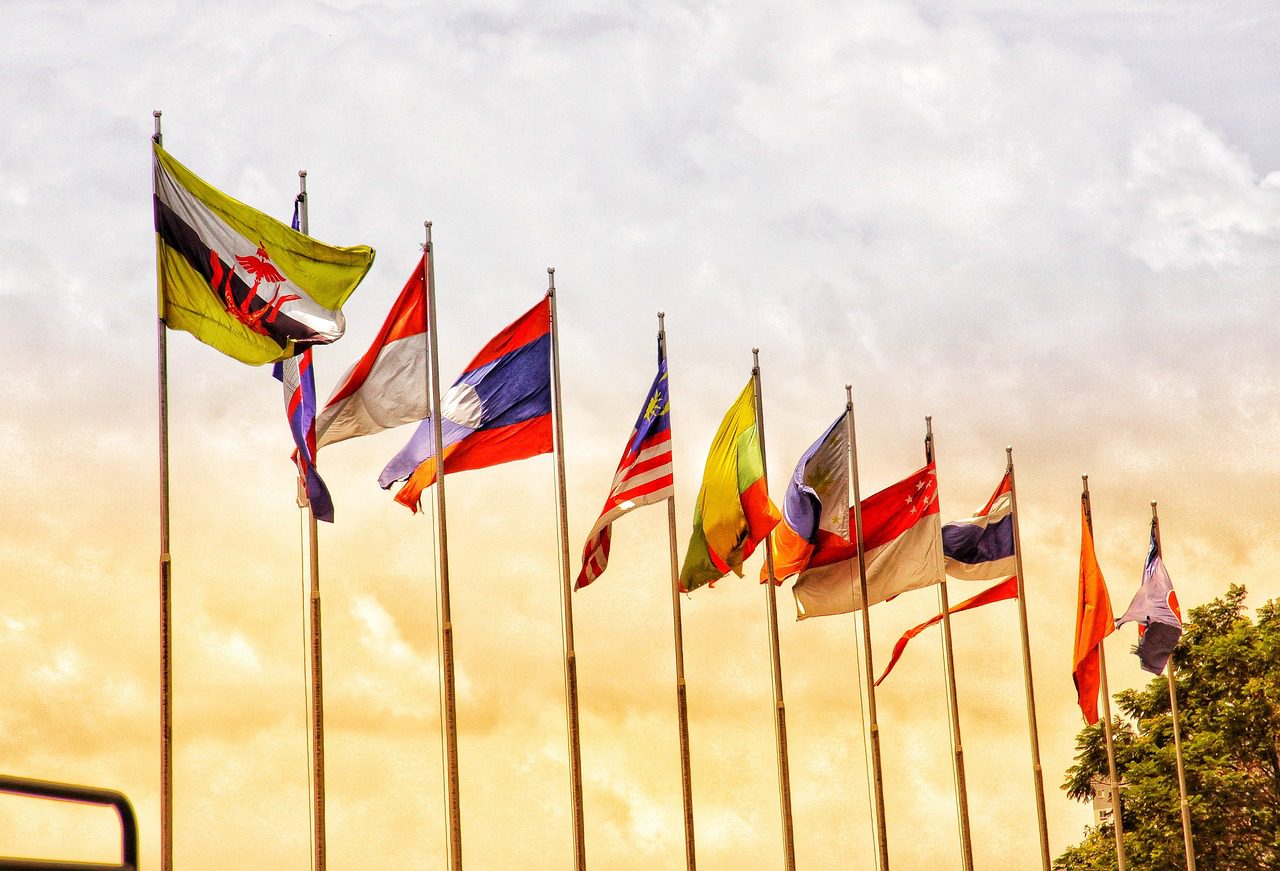
ASEAN – Association of Southeast Asian Nations
The Association of Southeast Asian Nations (ASEAN) is a regional organization. It unites countries in Southeast Asia. The goal is to work together in peace, development and culture. ASEAN helps members work together on a lot of things. They are economy, politics, security, culture and technology. Because they have so many similar issues, working together can offer more power than when working alone. With time, ASEAN has expanded and adopted new responsibilities. The world around it is transforming rapidly. International trade, information technology, global warming and geopolitics all influence the region. On this background, ASEAN’s role gains significance. It needs to ensure that its members keep up with changes and stay resilient. In this article, we will talk about ASEAN’s origin, how it is organized, its main goals, the benefits it offers to its member states, and what it has recently accomplished. We will also reflect on what the future of ASEAN could be. 
Historical Background
Asean was formed on 8 August 1967. The original five founding members were Indonesia, Malaysia, Philippines, Singapore and Thailand. They had signed the Bangkok Declaration. They pledged to promote regional cooperation. Subsequently, others joined as members: Brunei (1984), Vietnam (1995), Lao PDR and Myanmar (both 1997), Cambodia (1999). These ten replaced the initial five. The founders desired the assurance of peace in Southeast Asia. The region had wars, border conflicts, and ideological differences then. ASEAN offered a solution to countries talking, cooperating, and trusting each other. With shared history and geography, cooperation was reasonable. During the decades, ASEAN’s role grew. During the initial era, political and security affairs were prominent. Then came regional economic cooperation and integration as priorities. During the 1990s and the 21st century, regionalism became more robust. ASEAN adopted free trade systems, labour mobility, digitalization and other blueprints.
Structure and Pillars
ASEAN has several key pillars. They shape its activities and determine the cooperation among members. The main pillars are:
- The ASEAN Political-Security Community (APSC) – focuses on peace, stability, rule of law, conflict prevention.
- The ASEAN Economic Community (AEC) – integrates economies, reduces barriers to trade, raises investment and cooperates in areas.
- The ASEAN Socio-Cultural Community (ASCC) – focuses on people-to-people connections, culture, education, environment, disaster risk management.
Also, ASEAN has a Secretariat in Jakarta. The Secretariat helps with coordination, secretarial and technical work. A state chairs ASEAN each year and selects a theme for its chairmanship. Chairing gives a country a chance to put priorities under the spotlight.
Core Objectives and Principles
The aims of ASEAN are:
- To enhance economic growth, social progress and cultural development within the region. To develop regional peace and stability based on abiding respect for justice and the rule of law.
- Promoting active cooperation and mutual assistance on matters of common interest in economic, social, cultural, technical, and scientific fields. Being close and cooperative with the existing international and regional bodies.
ASEAN operates according to some rules: decision-making by consensus, non-interference in one another’s affairs, and respect for countries’ sovereignty. These rules guarantee unity between different nations.
Benefits of Joint Membership
Membership in ASEAN has numerous advantages for a nation. Due to cooperative action, member nations can derive benefits they may not readily obtain individually.
Economic Benefits
One significant advantage is economic integration. Through the AEC, ASEAN aims for a “single market and production base”. The objective is free flow of goods, services, skilled labour, investment and capital. For example, the ASEAN Free Trade Area (AFTA) eliminated most of the member countries’ tariffs. This boosted intra-ASEAN trade significantly. Investment flows have improved. The AEC blueprint and other blueprints have improved the business environment. Most countries receive more foreign direct investment (FDI). Through cooperation, smaller countries enjoy access to larger markets. They realize economies of scale and more bargaining power in trade negotiations.
Social and Cultural Benefits
ASEAN fosters social and cultural relations. People-to-people ties increase. Students, youth, women and professionals benefit through exchange programs. Member nations share knowledge, culture and values. Youth of Malaysia, for example, stated they felt proud to be an ASEAN member and hopeful about regional prospects. Regional mobility, cultural festivals, language training, heritage programs foster people’s understanding. It lessens tensions and encourages trust-building.
Security and Stability Benefits
Via collaboration in the security pillar, ASEAN helps member states build trust, share information, collaborate in disaster relief, maritime security, and humanitarian assistance. Such collaboration helps the region to respond to common threats. For example, the ASEAN Multilateral Naval Exercise (AMNEX) brings member navies together for non-combat maneuvers like search & rescue and ecological protection. Such collaboration improves regional responses and builds confidence amongst members.
Technological and Digital Benefits
In the recent past, ASEAN has emphasized digital transformation, connectivity, and infrastructure. Regionally, the countries can adopt best practices, encourage tech investment, build smart-cities, increase connectivity. For example, the region has already applied QR payment systems in nations, enabling cross-border digital payments.
Political and Global Influence
As a collective block, ASEAN has greater influence in international affairs than any nation can have when acting alone. ASEAN is able to negotiate trade agreements, climate change agreements and global cooperation. It makes Southeast Asia an area of interest around the world.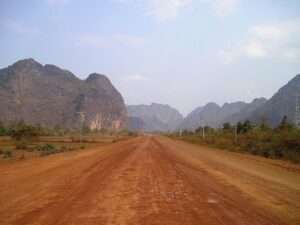
Expansion of Membership – Timor-Leste (East Timor)
In October 2025, ASEAN welcomed East Timor (Timor‑Leste) as its 11th member, the first expansion of the bloc since the 1990s. It is a significant milestone. It reflects ASEAN’s push for more inclusivity and increased regional integration. The country of approximately 1.4 million people and approximately US$2 billion GDP can now tap into ASEAN’s $3.8 trillion economy. The accession process involved fulfilling standards of governance, economic integration and diplomatic relations. ASEAN leaders emphasized that Timor-Leste’s accession is a manifestation of the region’s “one community” vision.
Strategic Roadmap: Kuala Lumpur Declaration on ASEAN 2045
In May 2025, Kuala Lumpur welcomed the 46th ASEAN Summit, during which leaders signed the Kuala Lumpur Declaration on ASEAN 2045: Our Shared Future. The declaration sets a 20-year vision for the region to map ASEAN’s future in political-security, economic, socio-cultural and connectivity pillars. Signing of this roadmap represents a long-term commitment to greater integration and resilience.
Trade and Economic Agreements
ASEAN recently finalised negotiations of historic trade agreements:
- Upgrade of the ASEAN-China Free Trade Area 3.0 (ACFTA 3.0) and ASEAN Trade in Goods Agreement (ATIGA). Upgrades revolve around digital economy cooperation, supply-chain resilience, and removal of non-tariff barriers.
- The ASEAN Digital Economy Framework Agreement (DEFA) plans are unfolding, with intensive negotiations completed and signing targeted for 2026.
- Energy infrastructure-related, ASEAN concluded a fortified Memorandum of Agreement on the ASEAN Power Grid (APG) project.
These economic and infrastructure deals are reflective of ASEAN’s momentum to connect more deeply and solidify its role in global supply chains.
Energy & Sustainability Initiatives
A new energy cooperation action plan (2026-2030) with ambitious targets was endorsed by ASEAN in October 2025: doubling renewable electricity to 45 % of installed capacity and increasing renewables to 30 % of the base energy supply. Soon thereafter, the World Bank and the Asian Development Bank (ADB) launched a financing program to fund the ASEAN Power Grid—with approximately US$10 billion pledged. Furthermore, on 1 September 2025, the ASEAN Centre for Energy (ACE) and United Nations Economic and Social Commission for Asia and the Pacific (UN ESCAP) signed an MoU to deepen cooperation in clean energy, energy security and connectivity.
Digital Economy & Connectivity
ASEAN is moving firmly into digital integration. Digital commerce, e-commerce, data flows, cybersecurity and harmonized regulation in member states will be addressed under the DEFA initiative. The Straits ASEAN-China relations also surged around digital infrastructure: cross-border cables, data centres, cloud computing alliances, and AI applications were part of recent agreements.
Strategic Diplomacy and Global Partnerships
ASEAN stays connected with leading partners at the international level while preserving its “centrality” in the regional order. ASEAN has pursued a “multi-alignment” approach—capitalizing on the great powers alongside diversifying cooperation, i.e., on US-China tensions. ASEAN held talks with the Gulf Cooperation Council (GCC) and China at the 46th Summit, gaining partnerships across geographical boundaries.
Security and Stability – Maritime & Naval Cooperation
ASEAN’s navies also continue to conduct drills together under the ASEAN Multilateral Naval Exercise (AMNEX) in humanitarian assistance, disaster relief, maritime security and environmental protection. These exercises further contribute to building confidence, interoperability and shared resources in the region’s seas.
The Benefits of These Signings and Activities
Economic & Trade Benefits
- Market Access & Scale-Economy: Through the upgrade of ACFTA 3.0 and ATIGA, ASEAN countries enjoy easier market access, reduced tariffs and simpler trade rules. Economies that are smaller benefit by linking to bigger markets.
- Supply-Chain Resilience: The digital and infrastructure deals allow supply chains to diversify away from relying on a single country. This makes regional production bases robust and investment more appealing.
- Digital Growth: The DEFA initiative seeks to double the digital economy of ASEAN to US$2 trillion from US$1 trillion by 2030. Straits Times Digital trade and aligned regulation ease e-commerce, fintech, start-ups and cross-border services.
- Energy & Infrastructure Cost Savings: The APG and renewable ambitions mean lower, cleaner energy, less fossil fuel import dependence, and greater regional connectivity. These cost savings find their way into industrial competitiveness and lower consumer prices.
Social & Cultural Benefits
- Membership Inclusiveness: Membership of Timor-Leste widens the community, realizes greater common identity and gives voice to small states. It also helps in initiating the integration of Timor-Leste into regional programmes, finance and expertise.
- Mobility and Interconnectedness: Increased cross-border mobility, potential of single-visa scheme by selected ASEAN members and e-services ease movement of people, work and study across borders. i3investor
- People-to-People Links: The deepened vision of 2045 encourages exchange programs in education and culture. Common cooperation, languages, and values are encouraged between nations.
Security & Regional Stability Benefits
- Shared Defense & Humanitarian Capacity: Joint naval exercises, shared mechanisms for disaster relief and cooperated intelligence enhance regional security. These enable trust and reduce chances of conflict.
- More Forceful Diplomatic Voice: With concerted consensus, ASEAN can negotiate more forcefully with external powers, protect its interests, and not get left behind in great-power rivalry. Multi-alignment strategy offers leverage.
- Strengthening Institutions: The 2045 roadmap is a long-term platform where more stable institutions, greater transparency, and treaty compliance can be built. Internal disunity is reduced, and governance is improved.
Technological & Environmental Benefits
- Green Growth: APG initiative and the renewable energy targets assist in decarbonising, increasing climate resilience and improving energy security. Clean energy avoids environmental risks and offers sustainable development.
- Digital Infrastructure: Enhanced connectivity, shared digital platforms and cross-border data flows allow all but especially less developed members to leap-frog into high-value sectors.
- Spill-Over Innovation: Digital economy and AI contracts benefit smaller member states with tech transfer, collaborative research and regional centres of excellence.
Regional Integration & Collective Power
- Combined Larger Market: Through ASEAN’s growing integration, the bloc becomes more attractive for investment. Joint signings reflect commitments, which result in FDI and growth.
- Shared Risk, Shared Reward: Collective action enables member states to weather global shocks—trade wars, pandemics, economic recessions—more effectively. Collective action makes resilience stronger.
- Global Relevance: With new and tighter covenants, ASEAN is no longer a witness—it’s a mover. Better trade deals with China, digital infrastructure, and energy alliances show that ASEAN is shaping flows across the world.

Real-World Impacts and Examples
- Thanks to the upgraded ACFTA 3.0 pact, conditions of digital economy and terms of the supply chain are likely to unleash fresh business opportunities for SMEs in countries like Cambodia and Laos.
- APG project financing (US$10 billion) will help link power grids of countries like Vietnam, Laos and Cambodia with those of Malaysia and Thailand. The outcome will be cheaper electricity imports, improved energy security, and reduced power blackouts.
- Timor-Leste’s membership brings the nation regional programs such as health, education, connectivity and trade facilitation. It also conveys a message of investor optimism: membership is likely to accelerate foreign interest.
- The drive for digital economy translates into young entrepreneurs in ASEAN gaining: cross-border e-commerce, cloud services and digital payments are made easier. The DEFA framework aims to harmonize such regulations.
- Multi-alignment diplomacy (bridge ASEAN with Australia, India, Japan, GCC etc.) means increased flows of investments and more diversified partners. An example is US$200 billion trade figure mentioned by the World Economic Forum indicating benefit.
Challenges and Caveats
Advantages do not necessarily ensue. Several challenges remain:
- Implementation of agreements (tariff cuts, digital blueprints) is laborious, involving coordination and capacity.
- Imbalances among member states (economy size, digital readiness, infrastructure) can retard roll-out and render benefits uneven.
- External factors (e.g., world supply-chain breakages, U.S.-China tensions) remain large.
- Institutional change—such as the reduction of non-tariff barriers (NTBs) or building single-visa systems—requires basic domestic changes.
- Signings are important, but monitoring, evaluation and enforcement are crucial. ASEAN must move from hope to action.
Looking Ahead: What These Signings Mean for the Future
- The 2045 roadmap is a long-term plan: by aligning the pillars of economic integration, digitalisation, connectivity and green growth, ASEAN sets itself up for the next 20 years.
- With Timor-Leste’s accession, ASEAN’s identity strengthens as a truly inclusive community. The bloc’s size, diversity and market potential increase.
- The emphasis on digital economy and AI means ASEAN will not just be a manufacturing base but a knowledge hub.
- Energy interconnectivity and grid infrastructure will be cost-reducing, reliability-increasing and make the region more attractive to industry and investment.
- The stronger diplomatic and security architecture will help contain regional challenges—from sea clashes to climate disasters—to deliver stability, which is essential for business and tourism.
Challenges Facing ASEAN
Notwithstanding the many benefits, ASEAN also confronts challenges.
- The heterogeneity among members is high: different levels of economic development, governance, cultures and languages. Coordination becomes increasingly difficult.
- Implementation of regional agreements is sometimes delayed. Tariffs are reduced, for example, but there remain non-tariff barriers.
- External pressures: major powers, trade wars, geopolitics, climate change mold the region.
- Members’ awareness and participation are diverse. Some youth feel connected, but the majority are not cognizant of ASEAN’s work.

ASEAN’s Future Vision
ASEAN’s Future Vision Going forward, ASEAN has 2045 as a vision for an area. It wants to be an area of peace, stability, resilience, prosperity and identity.
Chief drivers will be: Deepening economic integration and moving towards higher value activities. Enhancing digital economy, green economy and innovation. Increasing connectivity in transport, energy, digital, people. Creating inclusive societies where no country or group is left behind. Building more effective global partnerships with major powers and other regional blocs.
Conclusion
ASEAN plays a prominent role in Southeast Asia. Through collective efforts at the regional level, member states achieve economic, social, cultural, security and technological benefits that would otherwise be unachievable on their own. Through systems like AEC, APSC and ASCC, ASEAN drives regional integration. ASEAN’s recent signings and movements show a region both aware of global change and willing to move. Through growth, trade initiatives, e-platforms, energy partnerships and secure connectivity, ASEAN is reaping the dividends of co-operation. Their returns include among them economic growth, trade development, digitalization and social inclusion, stability and world relevance. At the same time, challenges remind us that agreements are only a beginning—delivery, building capacity and follow-through matter. As ASEAN moves forward to 2045, the region looks more integrated, dynamic and resilient. The recent signings are markers along this journey. To their peoples and member states, the promise is higher prosperity, higher opportunity and higher unity—higher than they could have achieved for themselves in isolation. The recent developments are renewable energy targets, expansion of membership, digital connectivity, inclusive programs—show that ASEAN is not resting on its laurels. It is realigning itself to a changing world.

